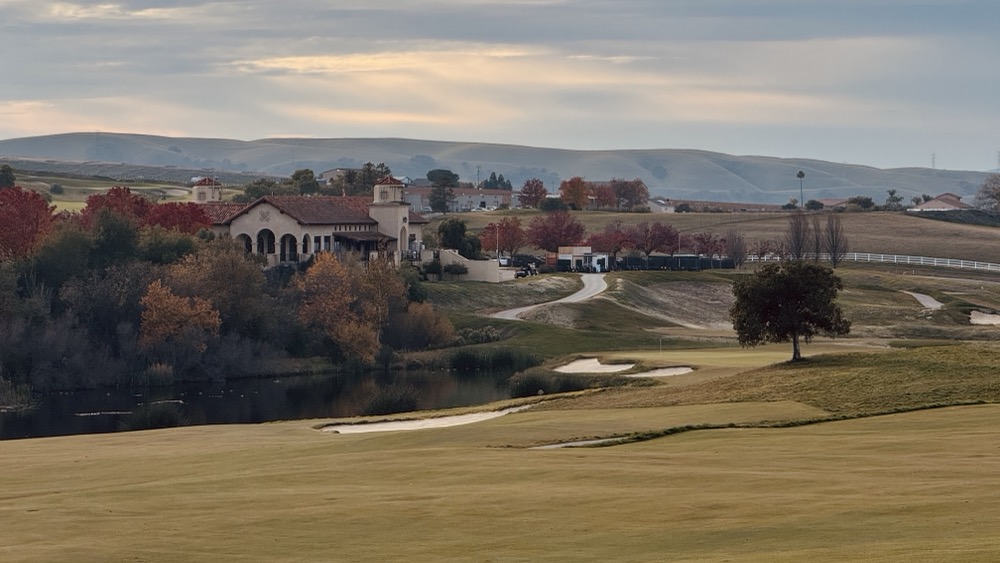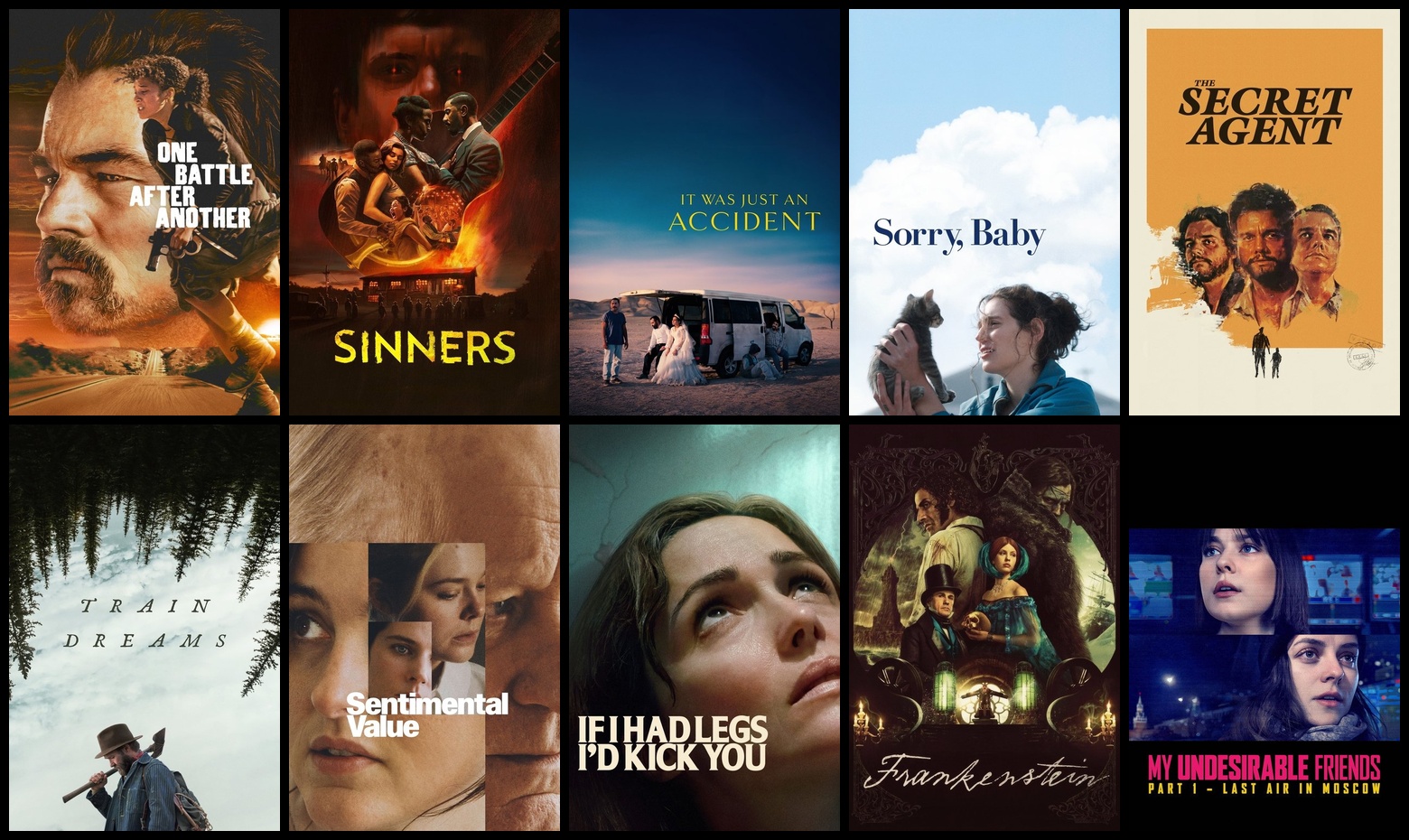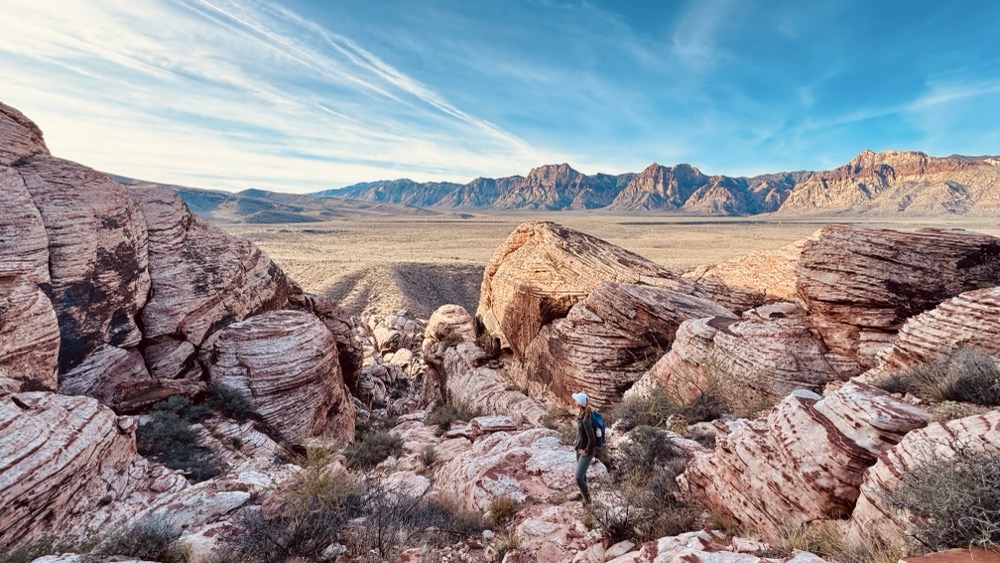Ronda
Ronda seems to be on everyone’s small-town-must-see list in Andalucía, and we can see why.
 Ussie in Setenil
Ussie in Setenil
We took the Avanza bus from Marbella to Ronda, again we pre-booked (necessary as the bus fills up – and we are in the lowest season right now). It was confusing in Marbella finding our bus because Ronda doesn’t show up on the destination list for the bus (it is a middle stop). Helps to keep asking bus drivers of the likely suspects.
Knowing we had an hour or two to kill after arriving, I left Julie in a cafe to sip some coffee and walked a mile to the outskirts of town to see about renting a car. We wanted to explore the white villages (los pueblos blancos) and our own vehicle would be the best option. There’s one game in town for this (as far as I could tell), but one friendly all-in-Spanish-transaction later we had a car booked for the next day.
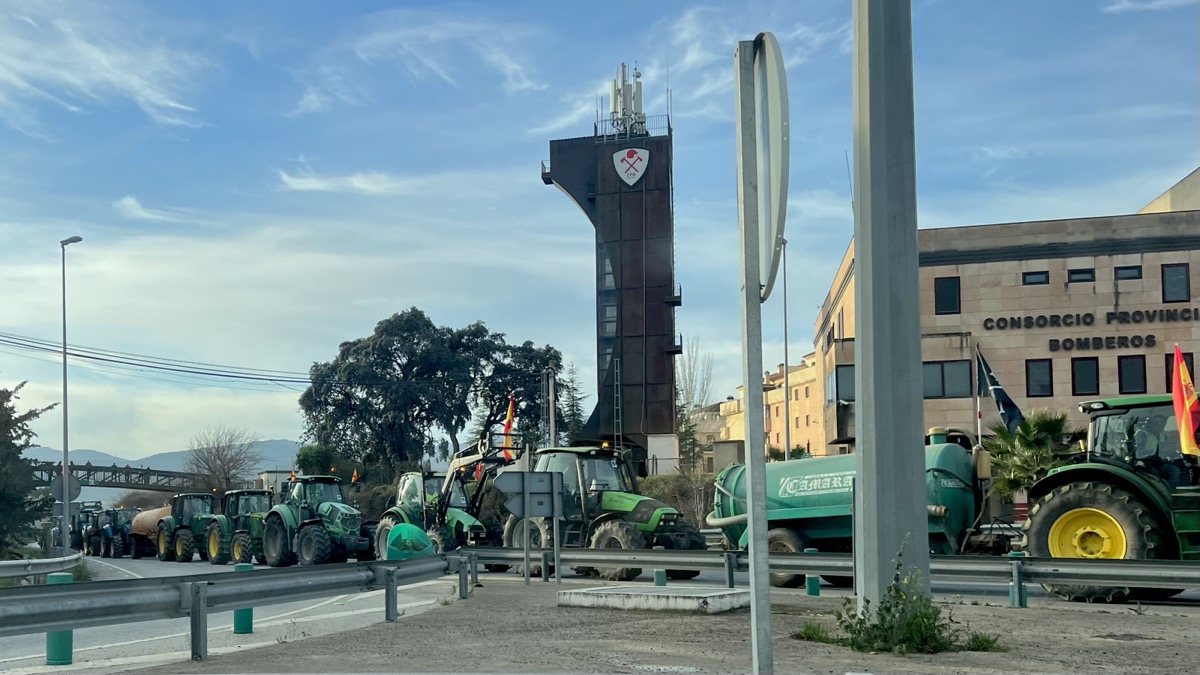 The farmer protest
The farmer protest
We were greeted with a surprise as we drove away from the rental agency the next day: what seemed like routine morning traffic at first was actually the Feb 6 farmer protest. The local police wouldn’t let us exit the roundabout on our desired route to Setenil de las Bodegas, which was likely only going to cause us more delays. Our first attempt to reroute was too backroad, too one-way, but our second attempt got us into town.
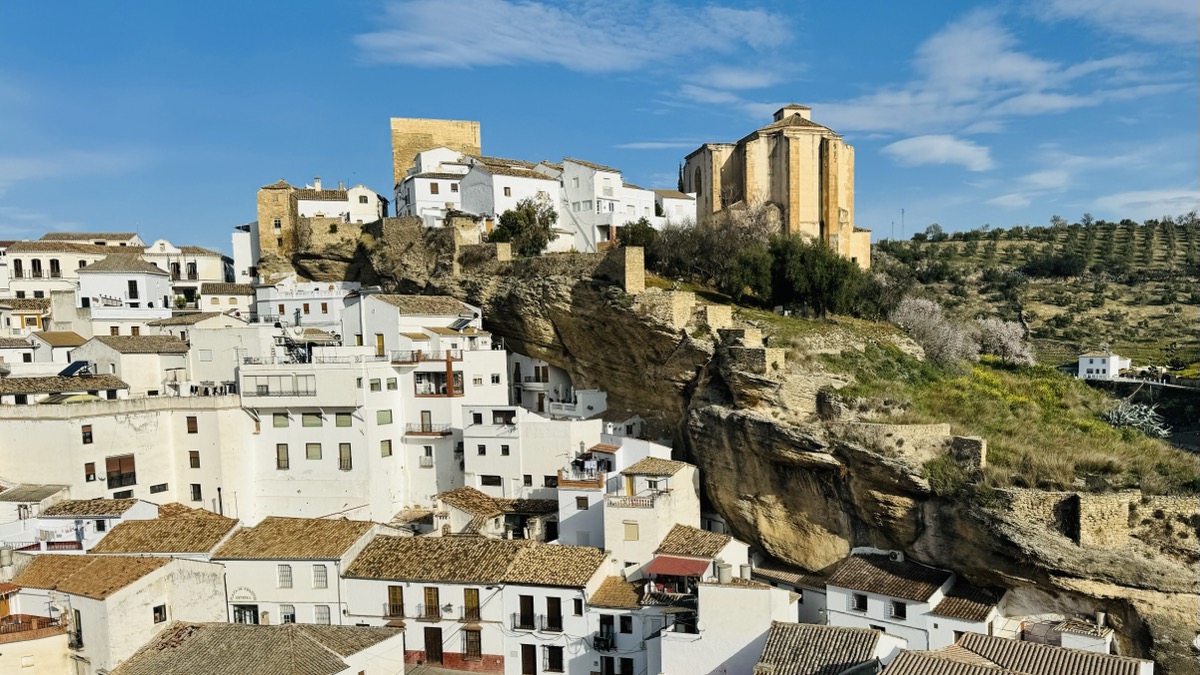 Buildings nestled in the caves in Setenil
Buildings nestled in the caves in Setenil
Setenil was cool – many white homes and cafes built directly into the recess cave walls. The town is small and nestled in a deep valley, with a rocky precipice jutting out in the middle. It only took us about an hour to walk around the entire town, including our mandatory stop for café con leche.
Our next stop was Zahara de la Sierra, and despite the lack of photo evidence it was our favorite of the three towns. I did take photos but they are not up to my stringent standards. The highlight was climbing to the top of the peak and visiting the Moorish castle. Our friends the griffon vultures were peacefully soaring around the castle during our visit.
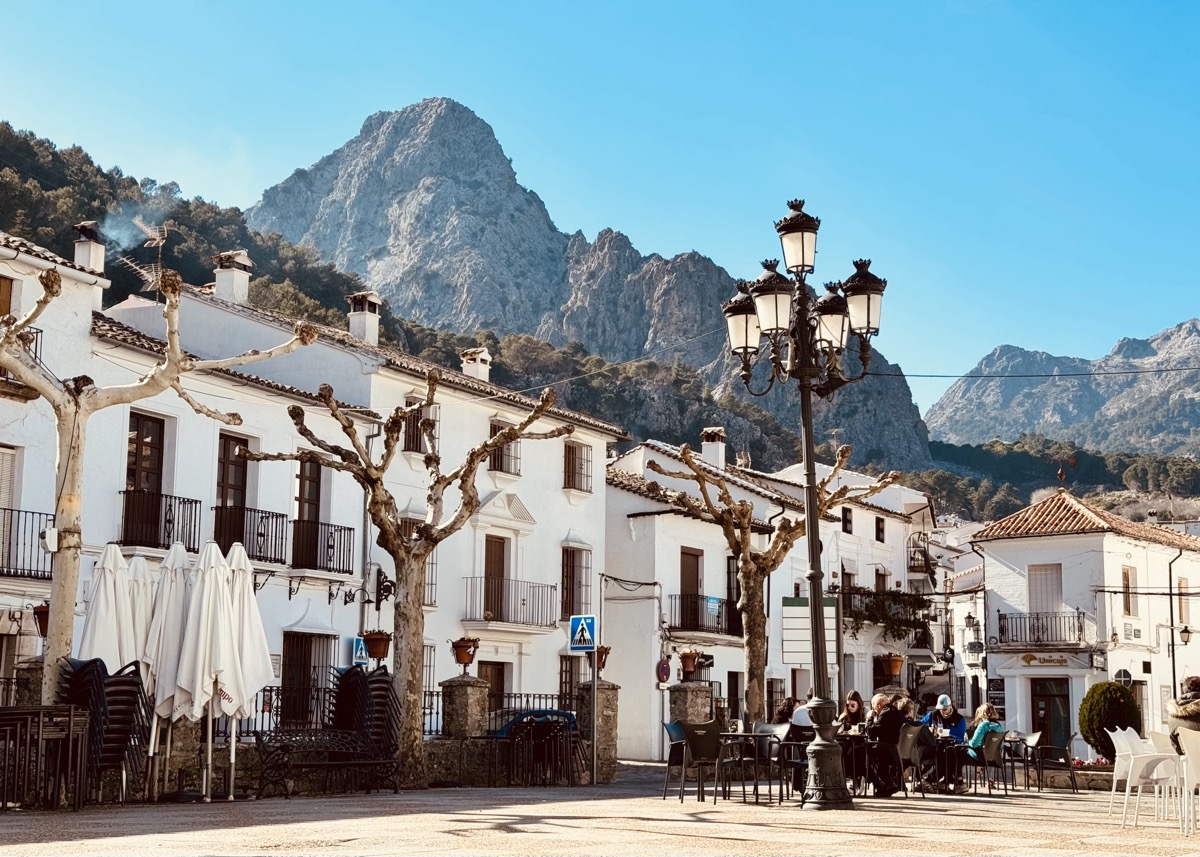 The village square in Grazalema
The village square in Grazalema
Our final village was Grazalema. The village was cute, yet another white Andalucían town, but the drive in from Zahara was stunning. The route goes through the Sierra de Grazalema Natural Park, and on it we saw several cyclists doing some serious hill climbing over the crest.
 The gorge bridge in Ronda
The gorge bridge in Ronda
Back to Ronda! Julie noticed in one of our guides that this is the town where they threw the fascists into the gorge in Hemingway’s For Whom the Bell Tolls. The gorge is impressive!
On our first day in Ronda we put our bags in a locker and strolled to the bull fighting ring, which has an impressive museum and plenty of info on the famous bull fighter from Ronda, Pedro Romero. Hemingway named the brilliant young matador in The Sun Also Rises after Romero. There’s also an equestrian training center at the bull ring.
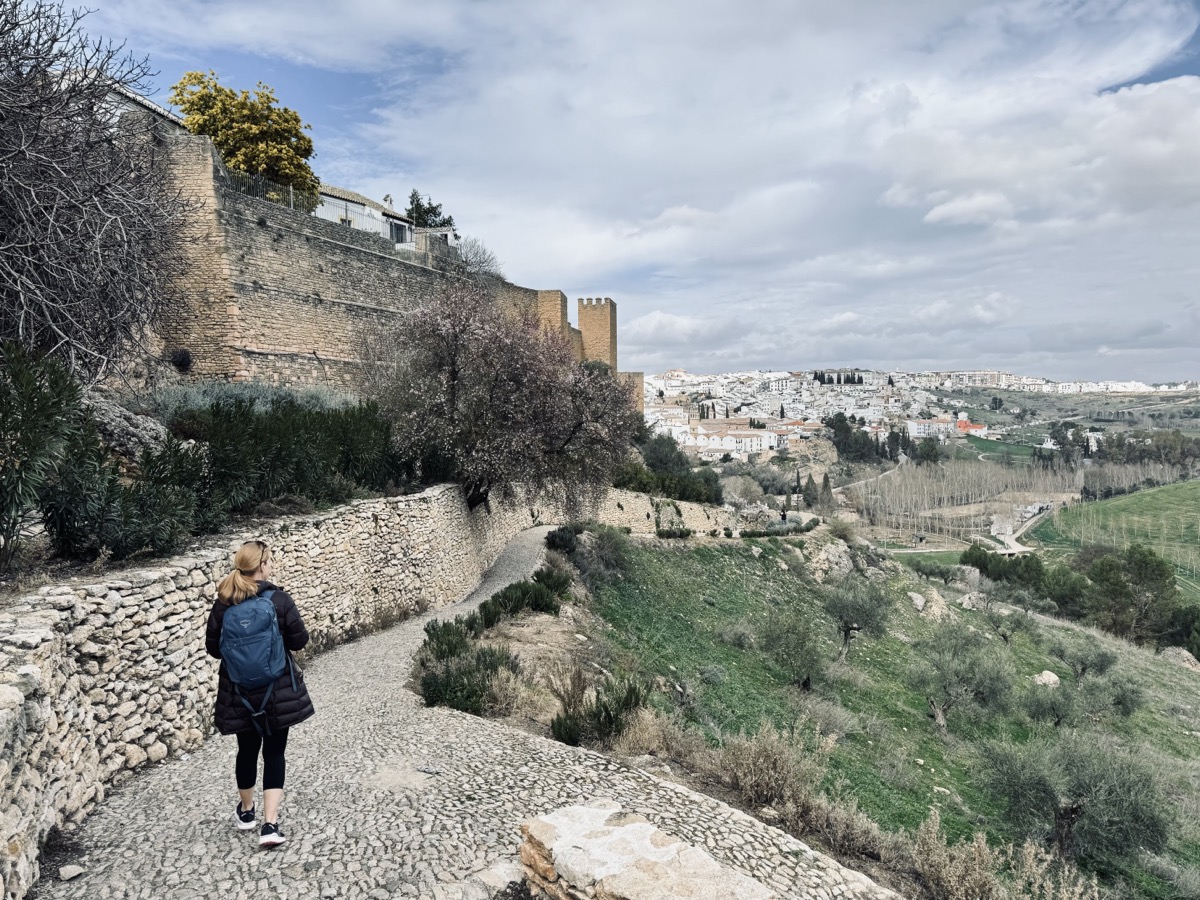 Strolling down the city walls in Ronda
Strolling down the city walls in Ronda
Our favorite part of Ronda was the old town on the south side of the gorge bridge. We visited the Arab baths, and did our favorite stroll in town along the ancient walls to the bridge below the gardens that run along the north face of the gorge.
Many folks do Ronda as a day trip, but I’m so glad we had it as a base of operations for a few days. Also, the tapas and wine scene is very good in town. There are a lot of wineries in the country surrounding Ronda, but all require (very) advanced booking so we were shut out of visiting and doing tastings.






